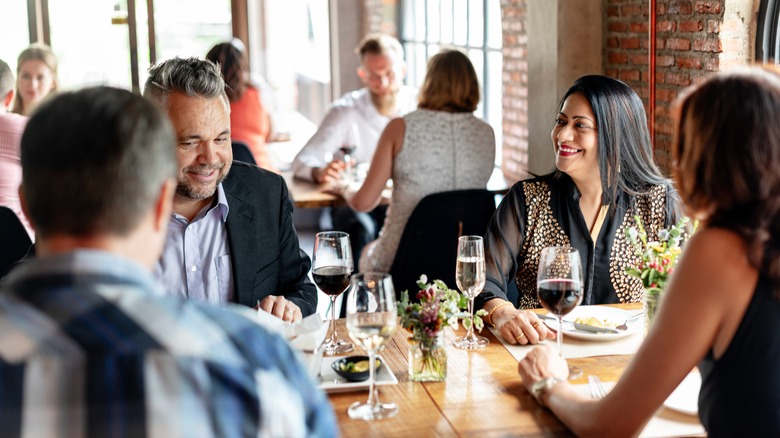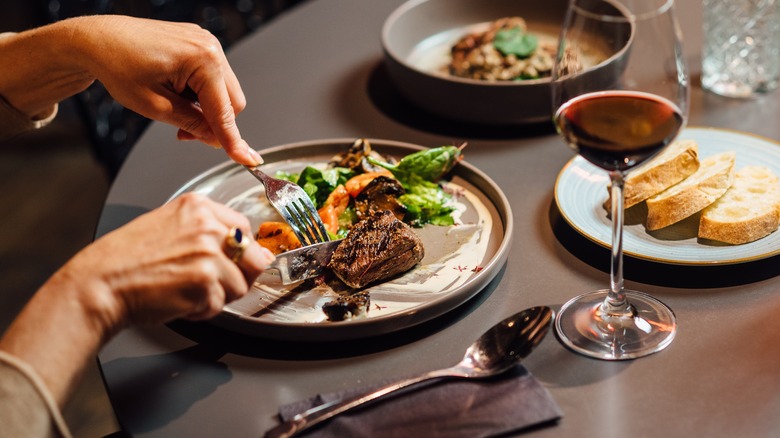The Unexpected Beloved Beverage That Breaks Traditional French Dining Etiquette
Okay, let's face it: France is a food lover's dream. From quaint boulangeries brimming with flaky croissants and perfectly crusty baguettes to charming cafés, elegant bistros, and Michelin-starred restaurants, the country's food scene is undeniably spectacular. Whether you're grabbing a lunchtime bite in Paris or snacking your way through the countryside of Provence, you can rest assured that you'll eat well. That said, enjoying a meal in France also comes with its own set of challenges. Especially when you consider that locals have a pretty strict set of unspoken food rules that tourists should know to avoid coming off as clueless. And, while most tourists might easily overlook these details, knowing a handful of these customs before your trip will seriously help you blend in.
Specifically, one of the most important French dinner table traditions has to do with the beverage you drink at mealtime — or, better yet, the one you don't. Because once you sit down for your first meal in France, you'll quickly notice that there's a familiar drink missing from the table: soda. Unlike in the U.S., where ordering a Coke or Sprite with your food is completely normal behavior, French people think of sodas as separate from mealtime altogether. Instead, whether at lunch or dinner, you're more likely to spot glasses filled with water (sparkling or still), wine, or beer at virtually every table around you.
The custom is so ingrained that the only place you'll potentially see French people drinking soda with food is at fast food joints. Even then, it doesn't happen as often. And if you do see a local enjoying a Coke at a more traditional establishment, there's something distinctly French about how it's even served, which is often in a small glass bottle alongside a tall glass with ice and a fresh lemon slice.
Other French dining quirks that might surprise you
Beyond saying "non" to soda, French table etiquette differs in several other ways. For starters, French people typically use their cutlery for pretty much everything. That's why it's so common to see locals eating typically hands-only foods (like pizza) with a knife and fork. Similarly, you likely won't see locals switch utensils between their hands to cut and eat. Instead, French diners are taught to keep their fork in the left hand and knife in the right throughout the entire meal.
In terms of the atmosphere, you'll also probably notice quite early on during your visit that French restaurants feel a lot quieter and calmer than American ones. Unlike what you're probably used to back home, it's highly unlikely that you'll hear the familiar noise level that builds up in American restaurants as the night goes on. Along with that, most French establishments don't play background music, either, which creates a totally different ambiance that's more focused on conversation, community, and food rather than on loud entertainment.
Lastly, don't ever ask for your leftovers to go. Although a typical request if you didn't manage to finish your meal in the U.S., asking for a takeaway bag in France can be considered offensive. This, because many French restaurants see "doggy bags" as a sign that you didn't enjoy your meal enough to finish it, or that you're being overly frugal.

